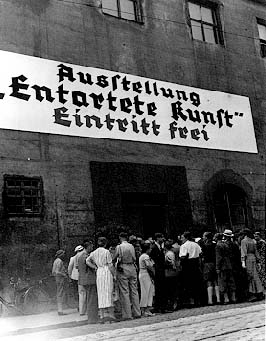University tramples free speech and artistic liberty:
some lingering questionsYielding to pressure from right wing political groups, Shirley Anne Jackson, President of Rensselaer Polytechnic Institute, has decided to make permanent the university’s the ban on “Virtual Jihadi,” an exhibition by visiting artist Wafaa Bilal. (See below for earlier developments.) A statement by William Walker, Vice President for Strategic Communications and External Relations, tries to explain:
“The decision was based on numerous concerns, including, in particular two characteristics of the video game in the exhibit, as affirmed by the artist: First, that the video game in the exhibit is derived from the product of a terrorist organization; and second, that the video game is targeted to and suggests the killing of the President of the United States.
Rensselaer fully supports academic and artistic freedom. We respect the rights of all members of the Rensselaer community and their guests to express their opinions and viewpoints. However, as stewards of a private university, we have the right and, indeed, the responsibility to ensure that university resources are used in ways that are in the overall best interests of the institution.”
The exhibit has been moved to the Sanctuary for Independent Media in Troy, a community center where artistic freedom is still revered.
The episode raises several important questions.
1. Do the leaders of Rensselaer recognize the difference between fact and fiction?
The answer is clearly “No.” By the standards articulated in the present ban, if a university theater group ever decides to produce Shakespeare’s Macbeth, the actors could well be arrested for planning and enacting a criminal conspiracy.
2. Does the university recognize the principle of free spelled out in the First Amendment of the U.S. Constitution?
Again the answer seems to be “No.” R.P.I. has assumed the power to curtail speech that is protected by the nation’s founding law.
3. Does the phrase “Rensselaer fully supports academic and artistic freedom” have any significance? No. These words are hollow, without any real substance. Something is “full” in the R.P.I. administration, but it is not recognition of academic and artistic freedom.
4. How will the faculty and students respond to this outrageous decision?
Good question. At present widespread torpor on campus is a perfect complement to President Jackson’s autocratic style of so-called “governance.”
5. Given recent the events, what would be an appropriate name for the fabulously costly building -- the “Experimental Media Performing Arts Center” (EMPAC) – the university will soon open?
How about: SMPAC – Sanitized Media Performing Arts Center
Our motto: Guaranteed not to offend, or your money back!
* * * * * * *
UPDATE:
Sanctuary shut down by malicious Troy bureaucratsOn the morning following last night's talk by Wafaa Bilal and his dialog with the audience gathered at the Sanctuary for Independent Media, the City of Troy decided to shut the place down. The Sanctuary has been open for several years, so you'd think that issues about building codes would have been addressed in a different context. It's obvious what this abuse of power by city officials is all about.
Here's an excerpt from the
Times Union:
Troy shutters site of 'Jihadi' video game
Sanctuary for Independent Media: Doors at issue
By BOB GARDINIER, Staff writer
March 11, 2008
TROY - The controversial "Virtual Jihadi" video game and art exhibit has now had two very short premieres.
Wafaa Bilal's "Virtual Jihadi" video game exhibit that features himself as a suicide bomber on a mission to assassinate President Bush opened last night at the Sanctuary for Independent Media and this morning the city shuttered the building for code violations.
"They put us out of business," Steve Pierce of the Media Alliance said. "They said we had doors that were not up to code."
Pierce said he got a call from city officials this morning telling him to close the building. . . . .



